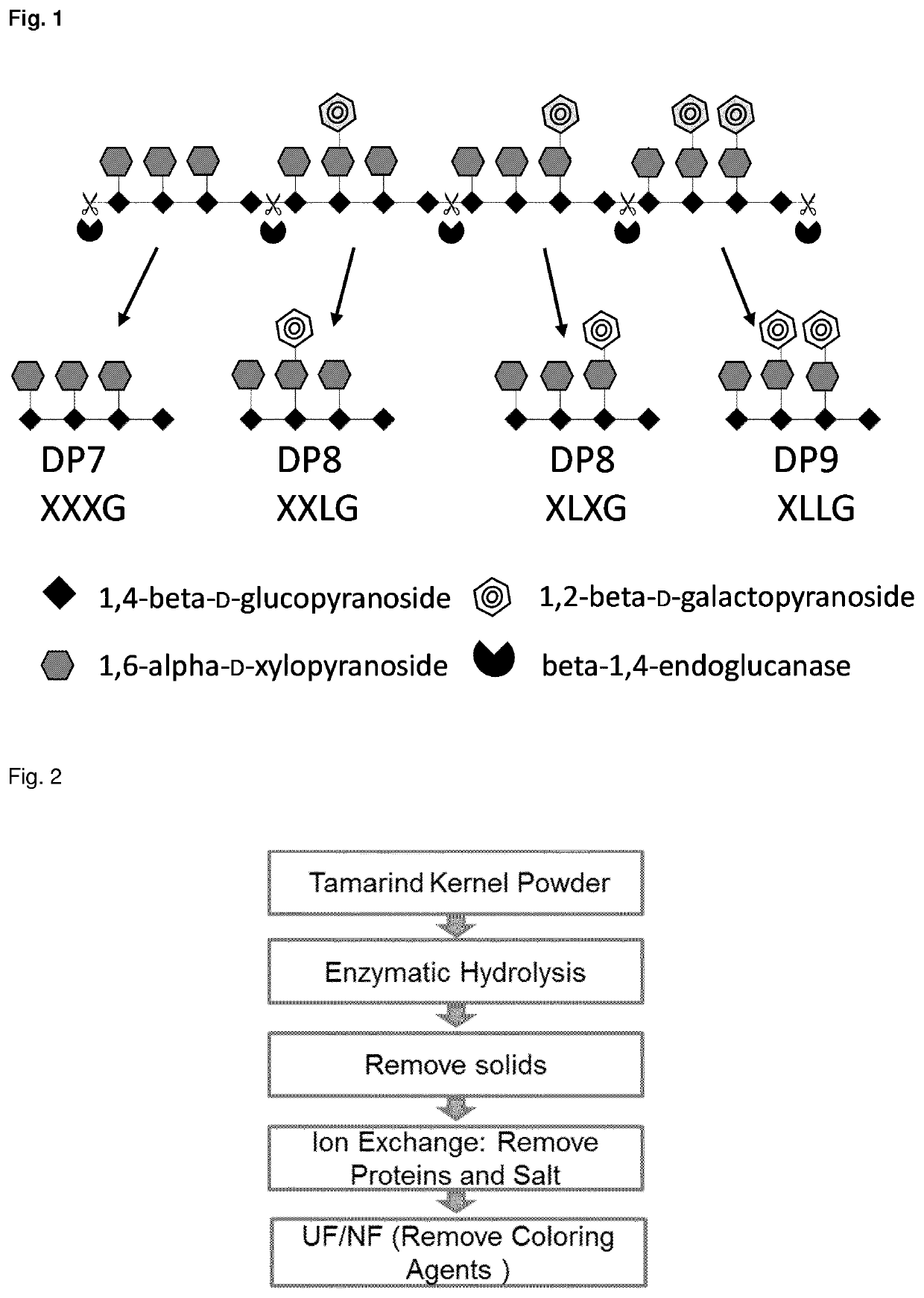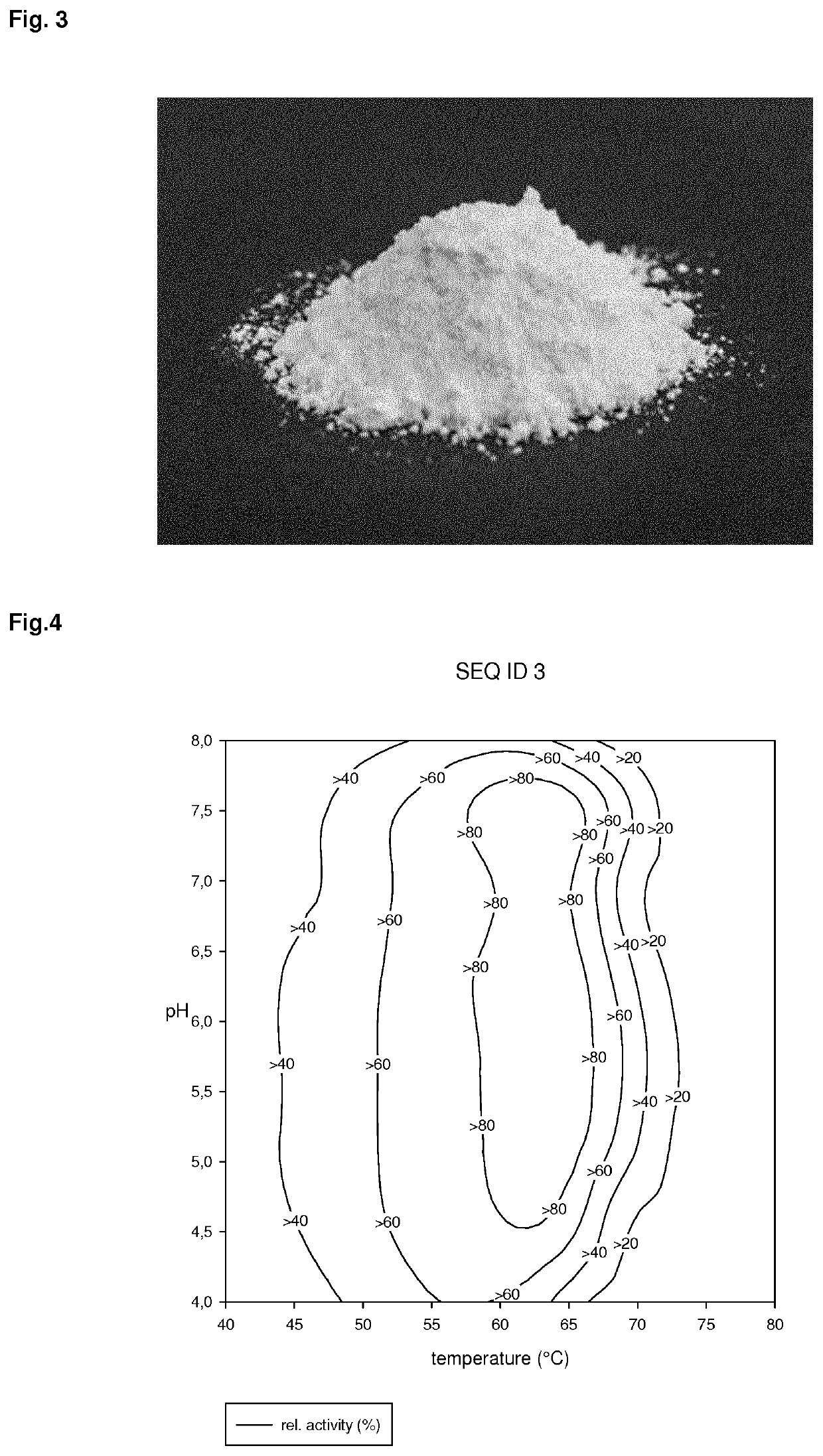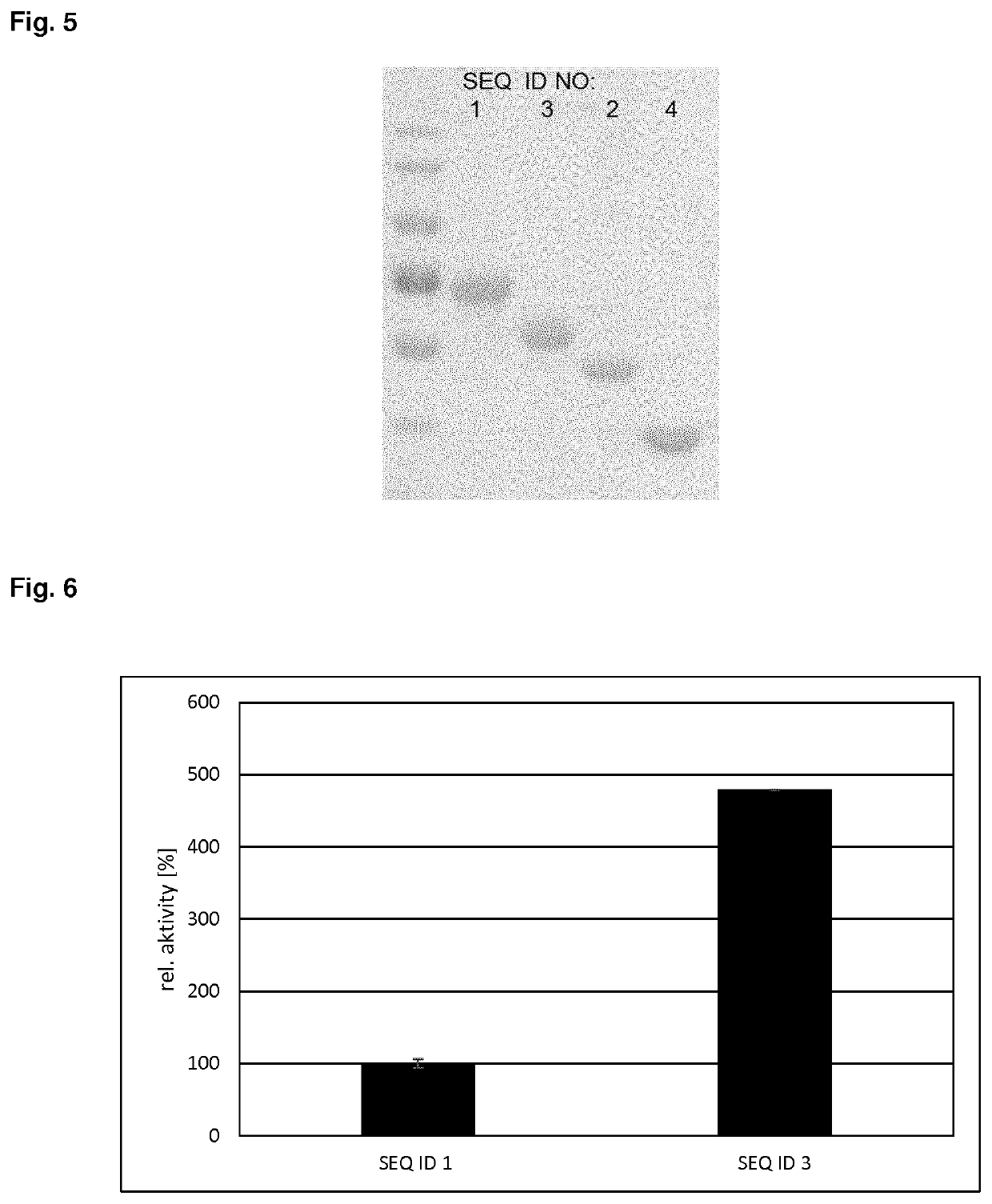Method for preparing xyloglucan-oligosaccharides
a technology of oligosaccharides and xyloglucan, which is applied in the field of oligosaccharides to achieve the effects of reducing the calories in food, improving human health, and lowering the blood glucose level
- Summary
- Abstract
- Description
- Claims
- Application Information
AI Technical Summary
Benefits of technology
Problems solved by technology
Method used
Image
Examples
specific embodiments
[0088]In a more specific embodiments of the present invention, the hydrolysis of tamarind oligosaccharide can be performed as follows:
[0089]Tamarind kernel powder (TKP) or defatted TKP is dissolved in water or demineralized water at a temperature in the range of 50.5 to 70° C., preferably 50.5 to 65° C., more preferably 50.5 to 60° C., most preferably at temperature of 51° C., 52° C., 53° C., 54° C., 55° C., 56° C., 57° C., 58° C., 59° C. or 60° C. The final concentration of TKP is 1, 10, 20, 30, 40, 50, 60, 75% (wt / vol) respectively. The TKP is added to the water by stirring at the desired temperature. One example to dissolve TKP is to add the TKP in one step reaching the final TKP concentration, another example is to add the TKP periodically or continuously to attain the final TKP concentration.
[0090]The enzyme may be added at the beginning of the hydrolysis as liquid or dry formulated soluble enzyme. Another example for enzymatic hydrolysis is to immobilize the enzyme by binding ...
example 1
f SEQ ID NOs 11-14 Encoding Endoglucanases and Expression of SEQ ID NOs 1-4
[0215]All Chemicals used as buffers and substrates were commercial products of at least reagent grade.
[0216]Cloning of SEQ ID NO 2: A new cellulose degrading bacterial strain named Herbivorax saccincola DSM101079 was isolated from a 20 I fermenter operated with cow manure and fed with maize silage at 55° C. Herbivorax saccincola was classified as a new family in the Ruminococcaceae (Koeck et al. 2016). For genome sequencing of the strain Herbivorax saccincola DSM101079, a total of 4 μg genomic DNA was used to construct an 8-k mate-pair sequencing library (Nextera Mate Pair Sample Preparation Kit, Illumina Inc.), which was sequenced applying the paired-end protocol on an Illumina MiSeq system. Analysis and interpretation of the Herbivorax saccincola DSM101079 genome sequence within GenDB and by means of the Carbohydrate-active-enzyme database dbCAN (Yin et al., 2012) revealed more than 100 genes predicted to e...
example 2
ization of SEQ ID NOs 1-4
[0224]Specific enzyme activity was determined by using a model substrate such as barley-beta-glucan (Megazyme). Endoglucanase activity is defined as the generation of reducing sugars from the model substrate. One unit of enzyme activity is defined as the amount of reducing sugars in micromol generated per mg of enzyme in one minute at 60° C. To define the enzyme profile and temperature and pH optimum the endoglucanases (50 ng / reaction) were incubated for 30 minutes at a temperature range from 50 to 80° C. in presence of 1% (wt / vol) barley-beta-glucan solved in citrate buffer with varying pH (range 4.0-8.0) (solution A: 0.2 M citric acid, 0.1 M NaCl; solution B: 0.4 M Na2HPO4, 0.1 M NaCl). Reducing sugars were measured by 3,5-dinitrosalicylic acid (DNSA) method: 50 microL sample were mixed with 75 microL DNSA-solution (10 g / L DNSA, 200 g / L K+-Na+-Tartrate, 10 g / L NaOH, 0.5 g / L Na2SO4, 2 g / L Phenol) in microtiter plates, incubated for 5 minutes at 95° C., cool...
PUM
| Property | Measurement | Unit |
|---|---|---|
| temperature | aaaaa | aaaaa |
| temperature | aaaaa | aaaaa |
| degree of polymerization | aaaaa | aaaaa |
Abstract
Description
Claims
Application Information
 Login to View More
Login to View More - R&D
- Intellectual Property
- Life Sciences
- Materials
- Tech Scout
- Unparalleled Data Quality
- Higher Quality Content
- 60% Fewer Hallucinations
Browse by: Latest US Patents, China's latest patents, Technical Efficacy Thesaurus, Application Domain, Technology Topic, Popular Technical Reports.
© 2025 PatSnap. All rights reserved.Legal|Privacy policy|Modern Slavery Act Transparency Statement|Sitemap|About US| Contact US: help@patsnap.com



